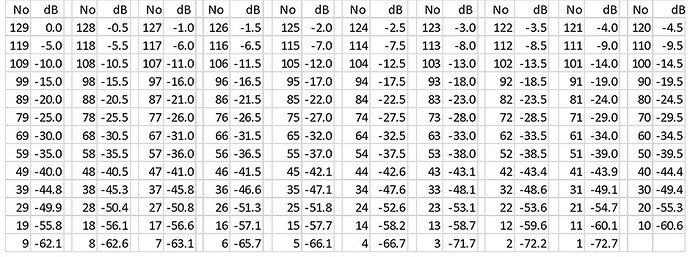My 2cents:
The Allegri Reference is a microprocessor-controlled, passive, autotransformer volume control (AVC) pre-amplifier. There are 129 individual 0.5dB steps, which give very fine volume adjustment at all listening levels. This incredibly wide range can accommodate very high source levels and very high sensitivity power amplifiers.
Although the signal path is totally passive in the Allegri Reference, the electronics and display require 12V DC. A universal power supply is supplied, with the appropriate plug, to suit your country’s mains supply. Power and music signal are always separate. There is no direct connection between the power supply and the signal conductors or ground.
The table below illustrates the extremely wide volume setting possibilities:
Maximum signal level: 4V RMS 8Hz; 10V RMS 20Hz and up.
Impedance: At 0dB, input impedance is 20kohm. At -10dB (normal listening, volume setting at 109, see above) input impedance is 200kohm, for a power amplifier load with 20kohm input impedance.
Since the decibel is defined with respect to power, not amplitude, conversions of voltage ratios to decibels must square the amplitude, or use the factor of 20 instead of 10. To convert decibels to voltage, see the link below:
If you set your Allegri to -10dB, its voltage ratio loss output will be 0.316228. So, if you set your Bartók to 6V out, your Allegri at -10dB will output 0.316228 x 6V = 1.9 V to your power amp. With normally mixed source material this would not overload your power amp’s input sensitivity. But if you set your Allegri to -15dB (volume setting 99), its output voltage will not exceed 1V. So, if you keep your Allegri’s output setting between -10 and -15dB (between 99 and 109) you will be safe.
